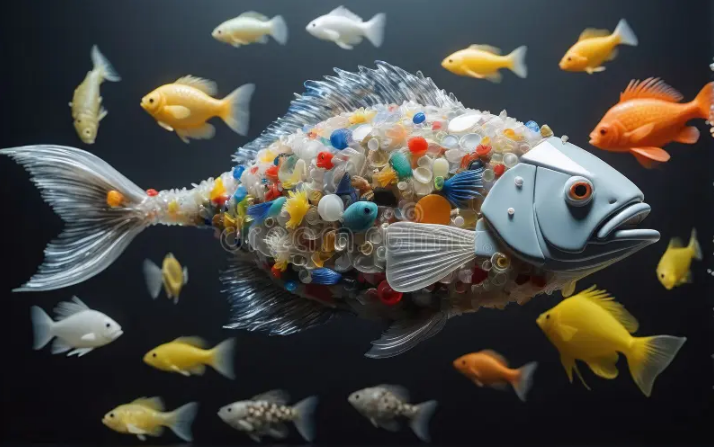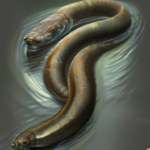Introduction to the Fish Eating Plastic Art
Imagine walking through an art gallery and coming face to face with a stunning piece that captures both beauty and despair. Fish eating plastic art does just that, blending creativity with a powerful message about our planet’s health. This unique form of expression reveals the shocking reality of pollution in our oceans while sparking conversations about change.
As we delve into this captivating artwork, you’ll discover how it reflects deeper issues and inspires action against plastic waste. Join us on this journey as we explore the intersection of art and activism, highlighting not just what’s at stake but also what can be done to protect marine life.
The Inspiration and Purpose Behind the Artwork
The “fish eating plastic art” movement emerged from a deep concern for marine ecosystems. Artists sought to illustrate the alarming reality of ocean pollution through striking visual narratives.
Many creators draw inspiration from personal experiences with nature. A walk along a beach littered with waste can spark feelings of sadness and frustration. This raw emotion translates into powerful artistic expression.
The purpose behind this artwork goes beyond aesthetics. It serves as a wake-up call, urging viewers to recognize the urgency of addressing plastic pollution. Each piece invites reflection on our relationship with nature.
Through bold colors and imaginative forms, artists communicate both beauty and tragedy. They challenge us to rethink our habits while igniting conversations around environmental stewardship. The artwork becomes not just an exhibit but also a catalyst for change in public awareness about plastic’s impact on marine life.
The Impact of Plastic Pollution on Marine Life
Plastic pollution poses a dire threat to marine ecosystems. Fish and other sea creatures often mistake plastic for food, leading to ingestion that can cause severe harm or death.
Microplastics have infiltrated even the most remote ocean depths. These tiny particles are consumed by plankton, which serve as the foundation of the marine food web. This contamination ultimately affects larger fish and mammals higher up in the chain.
Moreover, entanglement in plastic debris is another grim reality for many species. Sea turtles, seals, and birds frequently suffer injuries or fatalities due to discarded nets and bags.
The presence of plastics also disrupts natural behaviors in many aquatic animals. Changes in feeding patterns can lead to population declines that ripple throughout entire ecosystems.
Addressing this issue requires urgent action from all sectors of society—governmental bodies, organizations, and individuals alike.
Creative Ways to Combat Pollution
Innovation can spark real change in the fight against pollution. One exciting method is upcycling, where discarded materials are transformed into functional art or products. This not only reduces waste but also raises awareness.
Community clean-up events are gaining traction too. These gatherings foster teamwork and education about local environmental issues while directly addressing litter problems. Participants often leave with a renewed sense of purpose.
Another creative approach involves school programs that teach children about recycling and sustainability through engaging activities. By instilling these values early on, we empower future generations to care for our planet.
Digital art campaigns spread messages widely across social media platforms. Artists use their talents to highlight the urgency of environmental protection, captivating audiences while sparking conversations about plastic waste and marine life conservation.
Other Artists’ Commentary on Pollution Through Art
Artists worldwide are using their talents to shed light on the urgent issue of pollution. From striking murals to intricate sculptures, each piece serves as a wake-up call.
One notable example is the work of Chris Jordan, who creates large-scale photographs that capture the overwhelming impact of consumerism. His images often depict thousands of plastic items or discarded materials, forcing viewers to confront uncomfortable truths about waste.
Similarly, German artist HA Schult has gained recognition for his “Trash People” installations. These life-sized figures made from trash highlight the absurdity of our throwaway culture and invite reflection on environmental responsibility.
Notably, street artists like Banksy have employed satire in their pieces to critique corporate greed and its environmental consequences. Their clever visuals resonate with audiences while sparking dialogue around pollution.
Through diverse mediums and styles, these artists collectively challenge us to rethink our relationship with nature and inspire action against pollution.
How Individuals Can Make a Difference in Reducing Plastic Waste
Every small action counts when it comes to reducing plastic waste. Start by swapping single-use items for reusable alternatives. A simple cloth bag can replace countless plastic ones.
Consider your purchasing habits as well. Choose products with minimal or eco-friendly packaging. This not only helps the environment but also encourages companies to adopt sustainable practices.
Participating in local clean-up events is another impactful way to contribute. These gatherings foster a sense of community while directly addressing pollution in nearby areas.
Educating others about the consequences of plastic pollution amplifies your impact, spreading awareness beyond your immediate circle. Social media platforms are excellent tools for sharing information and inspiring change.
Be mindful of recycling correctly; improper disposal can negate efforts made elsewhere. Every individual effort creates ripples that lead to larger waves of transformation in our fight against plastic waste.
Conclusion
The issue of plastic pollution is a pressing one, affecting our oceans and the creatures that inhabit them. Fish eating plastic art serves as a powerful reminder of this reality. It combines creativity with urgency, pushing us to confront the consequences of our actions on marine life.
Artists across the globe are using their talents to highlight these environmental challenges. Their work inspires critical conversations about sustainability and encourages others to take action. The power of art lies in its ability to evoke emotion and provoke thought, making it an effective tool for change.
Individuals can play a significant role in reducing plastic waste by adopting simple yet impactful habits. From using reusable bags and bottles to participating in local clean-up events, every small action counts toward creating a healthier planet.
As we engage with fish eating plastic art and similar creations, we open ourselves up to new perspectives on pollution. This artistic commentary invites reflection on our relationship with nature and compels us to seek solutions together—one brushstroke at a time.


